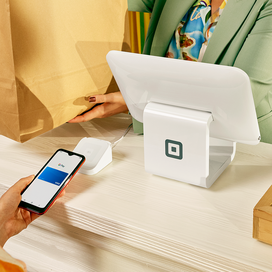Table of contents
As a retail business owner, boosting profitability is always a priority. In an industry with slim profit margins, the search for effective pricing strategies never ends. While fixed pricing is the norm, savvy retailers are turning to dynamic and smart pricing. Statista reports that 21% of eCommerce companies in North America and Europe have already embraced dynamic pricing. This strategy allows you to align pricing with your evolving business goals, providing you with the flexibility needed to grow revenue and boost profits.
What is dynamic pricing for retail?
Dynamic pricing involves adjusting the price of a product or service in real time based on various factors such as demand, competition, and customer behavior. Dynamic pricing optimizes pricing for maximum revenue or profit by responding to predetermined inputs like sell-through or changes in the external environment. For example, you can increase the price of a product when customer demand is high or lower the price to attract customers during slow periods.
Although the terms smart pricing and dynamic pricing are sometimes used interchangeably, smart pricing is generally used more loosely as a broader concept that encompasses the use of intelligent and data-driven strategies to set and adjust prices effectively. While dynamic pricing is a more established topic that specifically refers to the real-time adjustment of prices, smart pricing is often discussed as a broader strategy that encompasses dynamic pricing as well as other intelligent and data-driven approaches to pricing.
Pros and cons of retail dynamic pricing
Dynamic pricing offers the flexibility to capture maximum value during peak periods, efficiently manage inventory, and respond to changing consumer behavior. In addition, dynamic pricing can make your business more competitive, helping you attract price-sensitive customers with strategic discounts while maintaining higher prices during periods of increased demand.
Despite its benefits, dynamic pricing has its challenges. It can lead to customer dissatisfaction and erode trust if not implemented transparently. If you change prices rapidly, it may create a perception of unfairness, and your customers may feel exploited during peak demand periods. Unsurprisingly, a study by CivicScience found that most U.S. adults would not purchase a product in-store or online if it was dynamically priced. There’s also a risk of price wars with competitors, which could potentially undermine long-term profitability.
Because of these challenges, dynamic pricing requires careful consideration to balance the advantages with the need for transparency and customer satisfaction. If you are considering dynamic pricing for your retail business, this article covers strategies you can implement to reap the advantages without experiencing the downsides.
Dynamic pricing strategies to consider for your retail business
Dynamic pricing can be implemented through various approaches, each tailored to meet specific business needs. Here are some common approaches to consider for your business.
Time-based dynamic pricing
This strategy involves adjusting prices based on time of day, day of the week, or season. Using time-based dynamic pricing, you can implement flash sales and offer discounts for a limited time to attract customers during slower periods. You can also experiment with seasonal pricing. For example, winter clothing may be priced higher as winter approaches, and prices can decrease as the season progresses or during off-season sales. Another option is time-of-service pricing, where you adjust pricing based on how long it takes to deliver a service. For example, charging more for same-day or expedited deliveries versus standard delivery.
Segment-based pricing
This approach involves tailoring prices to different customer segments based on demographics, location, or purchasing behavior. You can reward loyal customers with exclusive discounts through a loyalty program or set prices based on geographic locations. You can also use customer data to personalize pricing, offering tailored recommendations and discounts on products that match individual preferences.
Demand-based pricing
Here, you adjust prices in response to changes in demand for a product or service. For example, you may increase the price of a product when it’s in high demand and stock is limited, and vice versa. If a particular product becomes popular or experiences a sudden surge in demand (e.g., due to a social media trend), you can adjust the price to capture the increased willingness to pay.
How to develop an effective dynamic pricing strategy
None of the strategies above should be implemented without careful planning. Here are the steps to ensure an effective dynamic pricing strategy.
1. Define your objective.
Do you want to gain market share or maximize short-term profits? Clearly articulate your revenue goals and how dynamic pricing will contribute to achieving them.
2. Study your numbers and sales data.
Dynamic pricing is all about maximizing profits. Whether it’s hiking prices during peaks or offering discounts during lows, profitability is key. Before diving into dynamic pricing, it’s crucial to grasp your numbers.
Review your cost of goods sold, profit margins, and markups. Understanding COGS, or the costs associated with producing your goods, is particularly critical in dynamic pricing because it provides a baseline for pricing decisions. Ensure that your markup covers not only the COGS, but also other operational expenses, such as rent, utilities, and labor, to achieve a sustainable profit margin. Square for Retail reports provide detailed insight into your cost of goods sold, making it easy to track this important metric.
Finally, analyze historical sales data to identify patterns, seasonality, and customer behaviors. Square Dashboard provides a wealth of data to help you make pricing decisions. You can also use Square Customer Directory to gain insight into your customer buying patterns and behavior.
3. Set pricing rules.
Pricing rules ensure consistency in decision-making. By defining rules, you can apply a systematic approach to price adjustments, avoiding arbitrary changes and maintaining transparency.
Start by setting lower and upper price bounds for each product or category. Setting a lower price bound ensures that you don’t price your products below a threshold that jeopardizes profitability, while an upper price bound prevents prices from skyrocketing to levels that may deter customers. These safeguards maintain competitiveness and prevent potential backlash from customers due to perceived price gouging. Your COGS, profit margins, and markups will collectively guide the setting of lower and upper bounds.
Next, determine the key pricing variables you will consider when setting prices. Common variables are demand, product inventory levels, and time-based factors. Once you’ve established these variables, identify events or conditions that alert you to make the required price adjustments. For example, using Square for Retail inventory reports, you can set alerts for when your stock drops below a certain level. Square for Retail also provides a daily projected profit report in order to better understand the projected profit of your inventory and adjust pricing accordingly.
4. Invest in support tools and technology.
Dynamic pricing inherently lends itself to technology. Once you’ve set out your pricing rules, you need to invest in technology that can help you implement those rules. Whatever the size of your business, Square tools provide a great starting point when implementing your pricing strategies for your business. With Websites, for example, you can set different shipping rates based on real-time rates, customer location, order totals, and more.
5. Implement and monitor.
Communication is crucial when implementing dynamic pricing to avoid customer backlash. Communicate changes in pricing to customers in a transparent and clear manner and, if possible, provide information on the factors influencing price adjustments. Solicit and consider customer feedback regarding pricing changes to understand their perceptions and make improvements.
Dynamic pricing is a flexible pricing strategy that can help your business adapt to changes in the market. It requires being smart and adjusting prices based on important external factors. This can help your business boost profitability while staying competitive and keeping customers happy.
![]()













